If you’re considering getting a tattoo and want it to last, then you’ll need to know how to make tattoo ink stay in skin. This article provides a few tips to ensure that your tattoo remains attractive and long-lasting. From choosing an experienced artist to taking proper aftercare, we’ll tell you how to make sure your tattoo looks its best for years to come. Read on to find out more.
Contents
What Is Tattoo Ink?
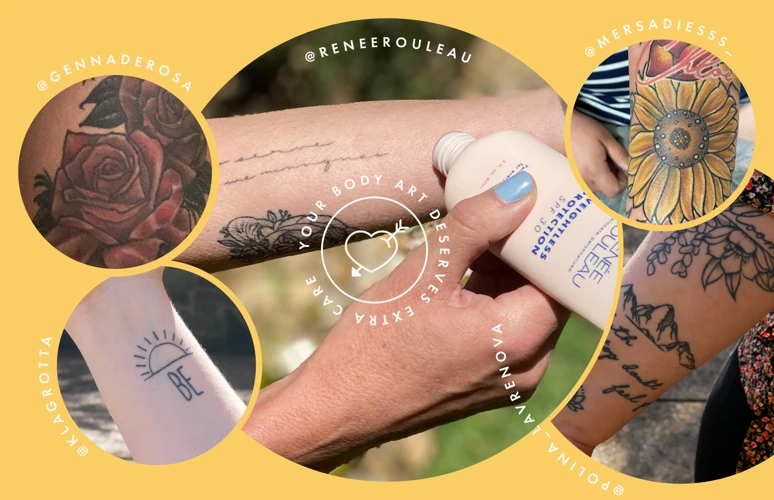
Tattoo ink is a permanent pigment that is injected into the dermis layer of the skin to create a design or pattern. It is made of a variety of organic and inorganic pigments, and is usually a combination of two or more colors. The ink is infused with a carrier solution and sometimes a preservative, depending on the manufacturer.
Here are few interesting facts about tattoo ink:
- The color of the tattoo ink depends on the color of the pigment used in it. Different colors can be mixed together to create a unique shade.
- Tattoo inks come in a variety of formulas, from water-based to oil-based, and even vegan-friendly formulas.
- Tattoo ink contains a preservative, called glycerin, which helps to keep the pigment from breaking down in the skin.
- The color of the tattoo can fade over time, depending on the quality of the ink and the environment it is in. Exposure to sunlight, air pollution, and even some skin care products can cause the tattoo to fade.
- Tattoo ink is not regulated by the FDA, so it’s important to do your research before getting a tattoo.
To make sure your tattoo ink stays in the skin and looks its best, it is important to follow a few simple tips. How to get tattoo ink to stay in skin?
- Choose a reputable tattoo artist and make sure they use quality tattoo ink that won’t fade quickly.
- Avoid exposing your tattoo to direct sunlight or any other source of UV light for long periods of time.
- Care for your tattoo properly with a gentle, fragrance-free soap and moisturizer.
- Avoid using harsh exfoliants or harsh skin care products on your tattoo.
- Stay hydrated and eat a healthy diet to ensure your skin is healthy and can hold onto the ink.
By following these tips, you can ensure that your tattoo will stay in the skin and look its best for years to come.
Why Is My Skin Not Taking Tattoo Ink?
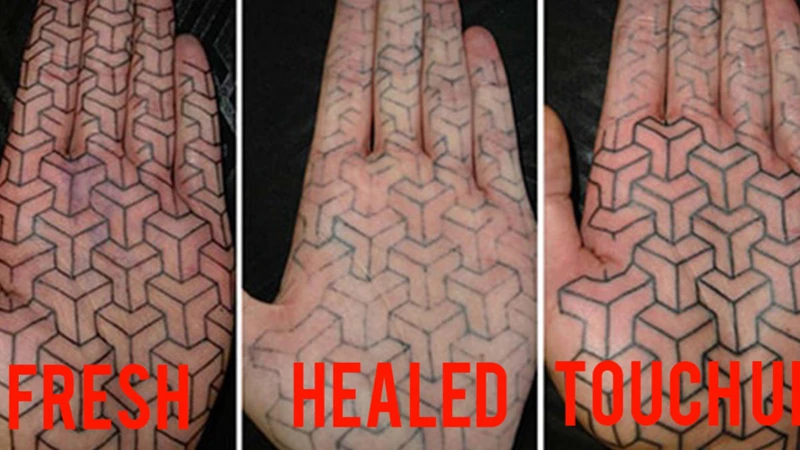
- Tattooing on Dry Skin: Tattooing on dry skin can cause the ink to not take or fade quickly. The skin needs to be properly hydrated in order for the ink to absorb.
- Tattooing Over Scar Tissue: Scar tissue is dense and can cause the ink to not take. If your tattoo artist is working on scar tissue, they should use a thinner needle and multiple passes to ensure the ink gets into the skin.
- Using Low Quality Ink: Low quality ink may not be as saturated with pigments and can cause the ink to not take, or fade quickly. Make sure you use a reputable brand of tattoo ink.
- Using Low Quality Needles: Low quality needles can cause the ink to not take. The needles should be sharp and the proper gauge for the tattoo.
- Tattooing on Oily Skin: Oily skin can cause the ink to not take or fade quickly. Make sure you cleanse the skin thoroughly before tattooing to remove excess oils.
- Using Too Much Pressure: Too much pressure can cause the ink to not take. The tattoo artist should use the right amount of pressure when tattooing.
What Are the Different Types of Tattoo Ink?
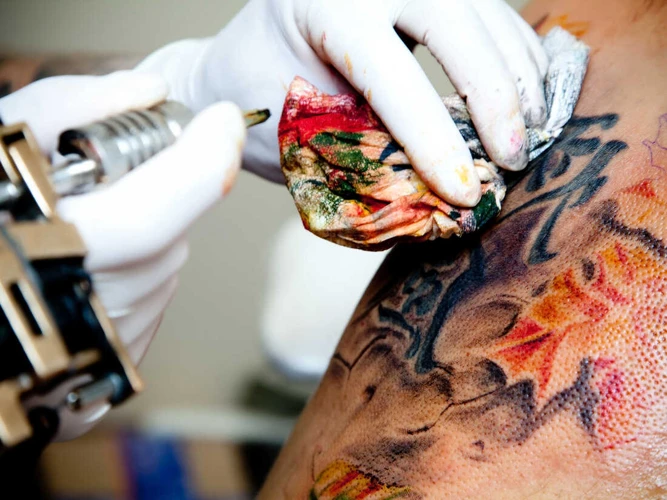
Tattoo inks come in various colors and consistencies. The most common type of tattoo ink is called “standard pigment”, which is made from a combination of organic and inorganic pigments suspended in a carrier solution. The carrier solution is typically made of glycerin, witch hazel, or alcohol, and helps to ensure the ink is safe and consistent.
Organic inks are often made from vegetable dyes or plant extracts, while inorganic inks are made from metal salts. Each type of ink has its own set of pros and cons, so it’s important to consider which type is best suited for your needs.
Organic inks generally provide brighter, more vibrant colors and last longer than inorganic inks. However, they can be more prone to fading and tend to bleed more easily. Inorganic inks, on the other hand, are less likely to fade and bleed, but they don’t always provide the same intensity of color as organic inks.
The best way to choose the right tattoo ink for your needs is to experiment with different types and find out which works best for you. It’s also important to remember that the quality and brand of the ink can make a big difference in the longevity of the tattoo, so it’s important to use high-quality ink from a reputable supplier.
What Are the Benefits of Using Quality Tattoo Ink?
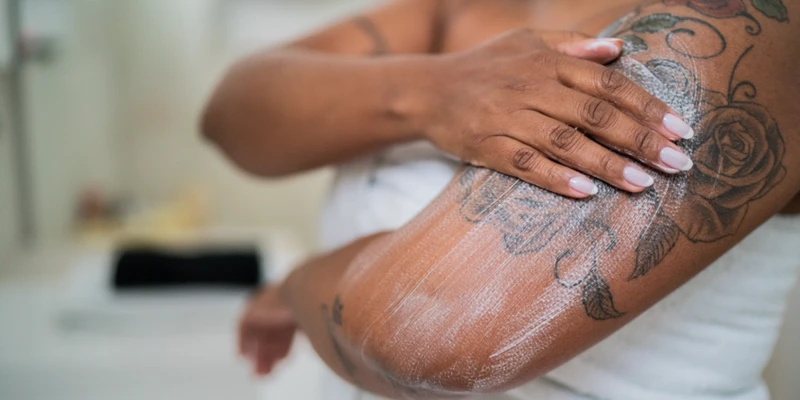
| Benefit | Description |
|---|---|
| Safety | Quality tattoo ink is made from natural pigments and is free from harmful chemicals and additives. |
| Vibrant Colors | High-quality ink ensures bright, vibrant colors that last a long time. |
| Durability | Quality tattoo ink is designed to stay in the skin longer than low-quality ink. |
| Precision | Quality ink is specifically formulated for tattooing and allows for better precision in tattooing techniques. |
Quality tattoo ink is essential for a long-lasting and attractive tattoo. Safety, vibrant colors, durability, and precision are all benefits of using quality tattoo ink. Quality ink is made from natural pigments and is free from harmful chemicals and additives. It ensures bright, vibrant colors that last a long time and is designed to stay in the skin longer than low-quality ink. Additionally, quality ink is specifically formulated for tattooing and allows for better precision in tattooing techniques.
How to Prepare the Skin for a Tattoo?
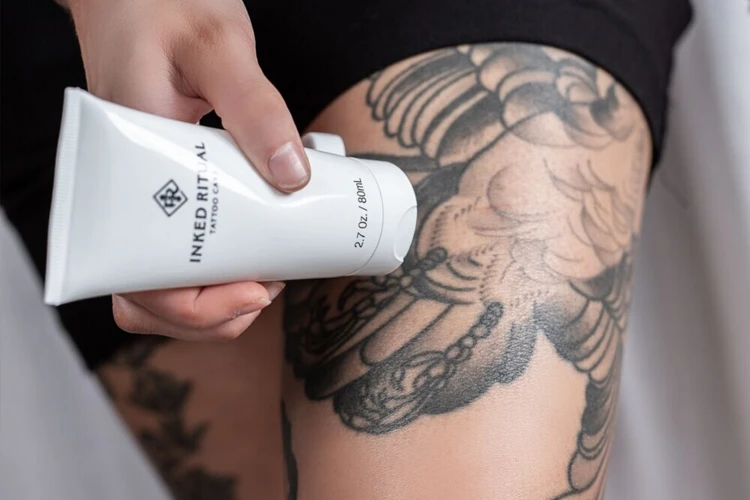
- Shave the Area: To prepare the skin for a tattoo, shave the area you plan to get the tattoo. Make sure that you use a new razor and shave the skin gently.
- Clean the Area: After shaving, it is important to clean the area properly. Use a mild antibacterial soap and warm water to clean the area.
- Exfoliate: Gently exfoliate the area with a loofah or a washcloth. This will help remove any dead skin cells and open up the pores.
- Moisturize: Apply a moisturizer to the area to make sure the skin is hydrated and healthy.
- Apply Petroleum Jelly: Once the area is clean and moisturized, apply a thin layer of petroleum jelly. This will help reduce friction during the tattooing process.
- Cover the Area: Cover the area with a clean cloth or bandage. This will help keep the area clean and protected from bacteria and other contaminants.
These steps are important to follow in order to prepare the skin for a tattoo. This will help ensure that the tattoo ink stays in the skin and looks vibrant and attractive for a long period of time.
How to Make Tattoo Ink Stay in Skin?
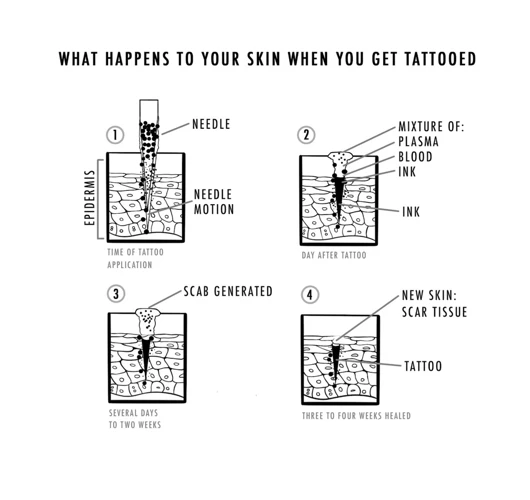
- Prepare the Skin: Before you start tattooing, make sure the skin is clean and free of dirt, oil, and sweat. Use an antiseptic to clean the area and shave any hair if needed.
- Choose the Right Inks: Choose a quality ink that is not expired and always use fresh ink for the tattoo.
- Use the Right Tools: Make sure the needles and other tools used in the tattoo process are clean and sterilized.
- Apply the Ink Properly: Make sure the ink is applied in a consistent manner and that the depth of the needle is correct for the area of the skin.
- Protect it from the Sun: The sun can cause fading and discoloration of the tattoo. Make sure to apply sunscreen in the area to protect it from the sun’s UV rays.
- Keep the Tattoo Clean: Following the tattoo session, it is important to keep the area clean. Gently wash the area with warm water and soap and pat it dry.
- Moisturize the Area: Moisturize the area regularly to keep the skin soft and supple. This will help the ink stay vibrant and prevent the tattoo from fading.
Tips for an Attractive and Long Lasting Tattoo

- Choose a Design Wisely – A well-designed tattoo will look more attractive and last longer than a hastily chosen one. Select a design that has personal significance and that you won’t regret later.
- Go to a Professional Tattoo Artist – Professional tattoo artists will ensure that the tattoo is created with precision and artistry. They also have the right equipment to ensure the tattoo ink stays in the skin.
- Choose Quality Ink – Quality inks are less likely to fade or blur over time, so choose a brand with a reputation for quality. Quality inks also have fewer contaminants that can cause irritation or infection.
- Choose the Right Part of the Body – Certain parts of the body are more prone to fading and smudging than others. Areas with a lot of movement, such as the hands, arms, and feet, should be avoided for permanent tattoos.
- Prepare the Skin – Before getting a tattoo, the skin should be cleansed and shaved. This will help the ink stay in the skin better and also reduce the risk of infection.
- Take Care of the Tattoo – Aftercare is essential for a long-lasting tattoo. Keep the area clean and dry, and use a good quality moisturizer to keep the skin hydrated and prevent scabbing.
What Are the Aftercare Tips for Tattoos?
Once you have your tattoo, it is essential to take care of it properly to ensure that it looks great and lasts for a long time. The following are some tips for aftercare of a tattoo:
- Keep the area clean: Wash the tattoo twice a day with lukewarm water and mild, unscented soap. Do not use harsh chemicals or scrub the area. Pat dry with a clean, soft towel.
- Apply healing ointment: Apply a thin layer of fragrance-free, water-based ointment to the area. This will help keep the tattoo from drying out and cracking.
- Avoid direct sunlight: Exposure to direct sunlight can cause the colors to fade and can also damage the skin.
- Limit touching: Avoid touching or scratching the area as this can cause the colors to fade or the skin to become irritated.
- Keep the tattoo moist: Moisturize the area with a fragrance-free lotion to keep the skin hydrated.
- Monitor for infection: Watch for signs of infection such as redness, swelling, or pus. If these signs are present, contact your doctor.
By following these aftercare tips, you can ensure that your tattoo looks great and lasts for a long time.
Frequently Asked Questions
What Materials are Used to Make Tattoo Ink?
Tattoo ink is composed of a variety of components, but the important ingredients are pigments, vehicles, and additives.
- Pigments: These are the main coloring agents in tattoo ink. They are typically derived from minerals, plants, and even insects. Common pigments are carbon black, titanium dioxide, and iron oxide.
- Vehicles: These are the carrier agents in tattoo ink that help the pigments bind to the skin. They also help make the ink easier to apply, as well as reducing skin irritation. Common vehicles are isopropyl alcohol, ethyl alcohol, and propylene glycol.
- Additives: These are additional ingredients added to the ink to improve the consistency and color. Common additives are glycerin, castor oil, and witch hazel.
The ingredients used to create tattoo ink vary from manufacturer to manufacturer, and it’s important to use a reliable and reputable brand to ensure that you’re using safe and high-quality ink.
How can I ensure my tattoo ink stays in my skin?
- Choose an Experienced Tattoo Artist: The first and foremost step to ensure that the tattoo ink stays in the skin is to choose an experienced tattoo artist. The artist should be able to provide a portfolio of their work, as well as have a certification from a recognized school.
- Choose Quality Tattoo Ink: Quality tattoo ink is essential for the longevity of the tattoo. Make sure that the ink is non-toxic, vegan and does not contain any heavy metals. Avoid using low-grade inks as they are more likely to fade quickly.
- Take Care of Your Skin: The health of the skin plays a major role in the longevity of the tattoo. Make sure to keep the skin clean and well-hydrated before the tattoo is done. Also, use a mild soap and moisturizer to keep the skin healthy after the tattoo is completed.
- Practice Good Aftercare: Aftercare is essential for the longevity of the tattoo. Make sure to keep the tattoo clean and dry, and avoid sun exposure and swimming for at least two weeks. Also, use a mild moisturizer to keep the skin from drying out.
- Use a Tattoo Protector: Using a tattoo protector is a great way to protect the tattoo from environmental damage. This product is designed to keep the tattoo from fading and allow it to last longer.
What are some tips for preventing the ink from fading?
- Use Professional Tattoo Ink: Professional tattoo ink has better pigments and lasts longer than other inks.
- Avoid Sun Exposure: Sun exposure can cause fading of the ink over time, so it’s best to cover your tattoo with a protective barrier when outside.
- Moisturize Regularly: Keeping your tattoo well moisturized will help keep it looking vibrant and prevent fading.
- Don’t Pick at the Skin: Picking at the skin can cause the tattoo to fade or become distorted.
- Avoid Swimming: Chlorinated water can make the ink fade faster, so it is best to avoid swimming in pools or the ocean.
How often should I moisturize my tattoo to extend its life?
- Use a moisturizer with natural ingredients: Choose a moisturizer that has natural ingredients such as shea butter, cocoa butter, and vitamin E. These will help keep the tattooed area well hydrated and prevent any cracking, fading, or other damage.
- Moisturize regularly: Moisturizing your tattoo should be done regularly, at least once a day. Apply a thin layer of moisturizer over the tattooed area, and massage it in gently. This will help keep the ink from fading and will make the tattoo look better for longer.
- Avoid certain products: Avoid products with alcohol or fragrances, as these can be irritating to the skin and can cause the ink to fade more quickly. Similarly, products with petroleum jelly should also be avoided, as this can damage the tattoo.
- Use sun protection: Sun exposure is one of the main causes of tattoo fading. Be sure to use sunscreen with an SPF of at least 30 when you are out in the sun, and reapply it often. This will help keep your tattoo looking its best for longer.
Is it Possible to Fix a Fading Tattoo?
Yes, it is possible to fix a fading tattoo. Here are some tips for making sure your tattoo ink stays in the skin for an attractive and long-lasting look:
- Choose a reputable tattoo artist who has experience in tattooing and use high-quality inks.
- Ask the tattoo artist to use a finer needle so that the ink is deposited more deeply into the skin.
- Avoid scrubbing or scratching the area near the tattoo.
- Always follow the aftercare instructions given by the tattoo artist.
- Always use a fragrance-free and mild moisturizer to keep the skin hydrated.
- Avoid sun exposure and use SPF 30 sunscreen.
- If the fading tattoo is on the face, use light foundation or powder to reduce sun exposure.
- If the fading tattoo does not respond to the above tips, consult a dermatologist for laser tattoo removal.
Conclusion
Tattoos are a form of art that is meant to last a lifetime. To ensure that your tattoo stands the test of time, it is important to use good-quality ink and proper tattooing technique. Additionally, taking care of your tattoo properly during the healing process will help keep your ink vibrant and attractive for longer. With a little bit of effort and patience, your tattoo can look beautiful for years to come.
References
- 1. Kint, A. (2011). Tattoo inks: Safety and regulations. Toxicology Mechanisms and Methods, 21(1), 1-10.
- 2. Centers for Disease Control and Prevention. (2020). Sterilization & Disinfection.
- 3. G.L. Milone, et al. (2020). Tattooing: traditional and contemporary trends. Journal of Cosmetic Dermatology.